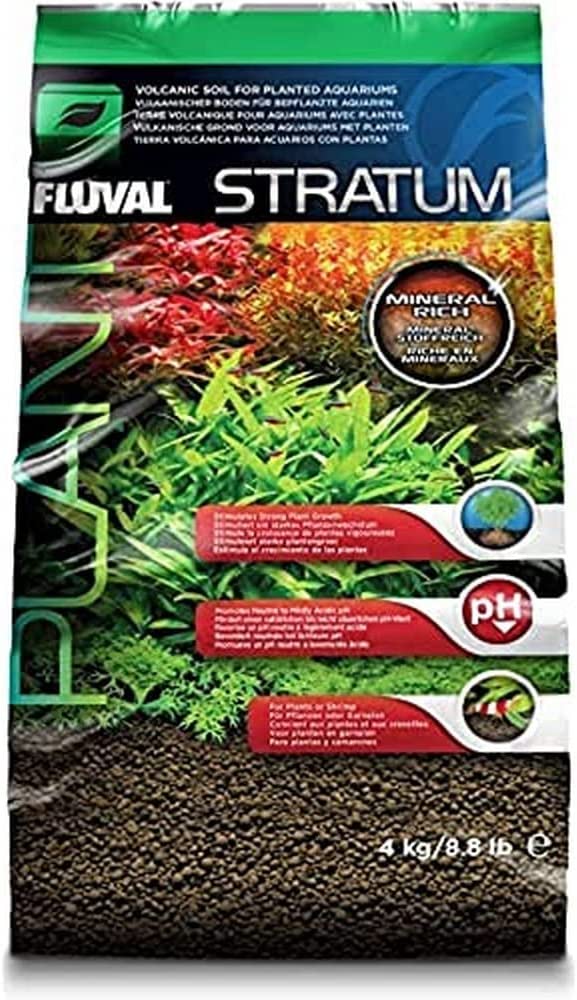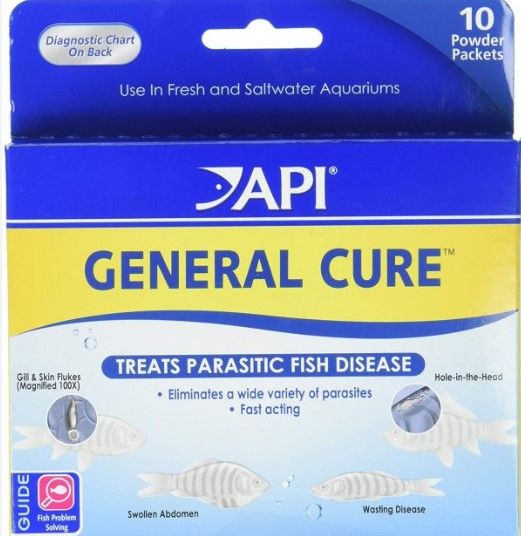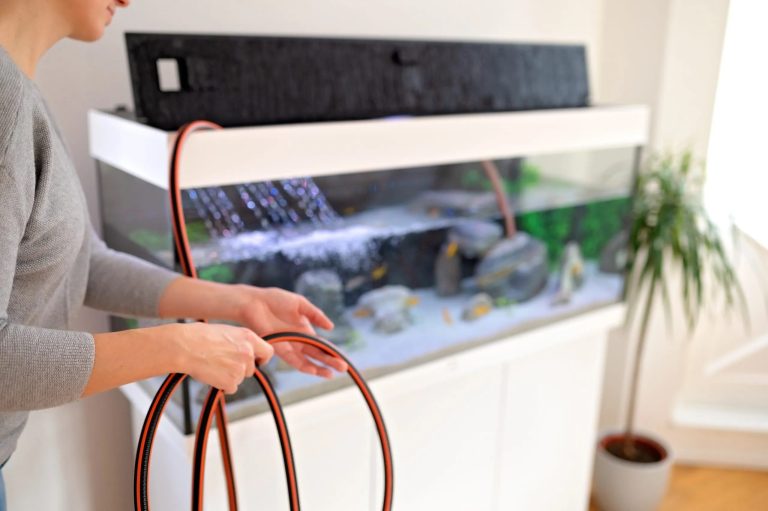Revive Your Aquascape: How to Clean Fluval Stratum
To clean fluval stratum, remove all water and debris from the tank and gently rinse the substrate with aquarium-safe water. Fluval stratum is a type of aquarium substrate made from volcanic soil that is popular among hobbyists due to its ability to lower ph and create a natural-looking environment for aquatic plants and fish.
To maintain its effectiveness, it is essential to clean it periodically. In this article, we’ll guide you step-by-step on how to clean fluval stratum. We’ll discuss the supplies needed, the preparation process, and the cleaning techniques necessary to ensure the substrate remains healthy and functional for your aquarium.
With this information, you’ll be able to keep your tank clean and healthy for your aquatic pets with minimal hassle.

Credit: issuu.com
Understanding Fluval Stratum
Fluval stratum is a substrate material widely known for its benefits in the aquascaping world. It is made up of volcanic soil and is considered to be a nutrient-rich substrate. We’ll dive into the understanding of fluval stratum, its benefits, downsides, and how often you need to clean it.
What Is Fluval Stratum?
Fluval stratum is a porous volcanic soil used as a substrate in planted aquariums. It is made up of small, lightweight granules that do not compact over time, which aids in water circulation and root growth. The black color of fluval stratum not only creates a dramatic effect but also offers a natural appearance to the aquarium.
What Are Its Benefits In Aquascaping?
Using fluval stratum as a substrate in your aquarium offers various benefits:
- Nutrient-rich: Fluval stratum is rich in minerals that help to promote plant growth and sustain them in the long run.
- Lightweight: It is lightweight, making it easy to transport and manage while setting up your aquarium and rearranging your aquascape.
- Aids in ph stability: Fluval stratum is acidic, which helps to lower the ph level of the aquarium, making it ideal for softwater fish species.
- Promotes healthy root growth: The porous nature of fluval stratum aids the roots in drawing nutrients and oxygen from the substrate, helping promote healthy root growth.
What Are Its Downsides?
While fluval stratum has various benefits, it also comes with some downsides:
- Dust: The substrate is known to produce dust when you first set up the aquarium, which can cause cloudiness in the water. It’s essential to thoroughly rinse the substrate before adding it to the tank.
- Can lower ph levels: As mentioned earlier, fluval stratum is acidic, which can be harmful to fish that prefer higher ph levels. It’s essential to select fish that can thrive in the ph range of fluval stratum.
- Expensive: Compared to other substrates, fluval stratum is relatively expensive, which may not be ideal for hobbyists on a budget.
How Often Should You Clean It?
It’s essential to clean fluval stratum regularly to maintain water quality and prevent the buildup of harmful toxins. Cleaning is necessary every 1-2 weeks, depending on the level of debris present in the aquarium. It’s suggested to clean 25% of the substrate at a time, as a complete water change can disturb the stability of the substrate.
In some cases, if the substrate is old and appears to be breaking down, it’s better to remove and replace it with new substrate.
Fluval stratum is an excellent option for planted aquariums, but like any substrate, it comes with its advantages and disadvantages. With proper maintenance and care, fluval stratum can help you create a beautiful aquascape that will thrive and flourish.
Tools You’Ll Need
Fluval stratum is considered one of the best substrates for planted aquariums as it contains essential nutrients that promote plant growth. However, over time, it can become dirty and compact, which could lead to poor water quality. To keep your aquarium substrate clean and healthy, regular maintenance is crucial.
Here is a list of necessary equipment you will need to tackle the task.
A List Of The Necessary Equipment Needed For Cleaning Fluval Stratum:
- Gravel vacuum cleaner: This tool will help you remove debris and waste from the substrate without having to remove the water.
- Bucket: You will need a bucket to pour the dirty water and debris collected by the gravel vacuum cleaner.
- Scraper: A scraper can be used to gently remove any stubborn debris stuck on the substrate.
- Siphon hose: To make the cleaning process easier, a siphon hose can be attached to the gravel vacuum cleaner to help drain and refill the water.
- Gloves: Although not a must-have, gloves can protect your hands from harmful chemicals or any debris that may be present.
Where to purchase these tools:
- Gravel vacuum cleaners, scrapers and siphon hoses can be found in your local pet store or online shop (e.g. Amazon).
- Buckets are readily available in your local hardware store.
- Gloves can be found in your local department store.
When it comes to cleaning fluval stratum, having the right tools can make the task a lot easier. Make sure to maintain your aquarium regularly to keep your aquatic plants healthy and your fish happy. Remember to use the above equipment to ensure your aquarium substrate remains clean, healthy, and free of waste and debris.
Steps To Clean Fluval Stratum
Fluval stratum is a popular substrate layer for aquariums, due to its eco-friendly, porous composition that promotes the growth of beneficial bacteria. Though it is a durable substrate, it does require attention and maintenance. In this guide, we will explain how to clean fluval stratum to ensure a healthy and clean aquarium.
Safety Tips To Consider Before Cleaning
Before beginning the cleaning process, it’s important to consider a few safety tips to protect both you and your aquarium inhabitants:
- Turn off all aquarium equipment, such as filters, heaters and lights, to avoid electrocution or damage to equipment during cleaning.
- Always wear gloves to protect your skin from potentially harmful bacteria or chemicals.
- Avoid using any cleaning agent that is toxic to fish or their environment.
Step-By-Step Guide On How To Clean Fluval Stratum
Cleaning fluval stratum is a straightforward process, which can be accomplished in a few easy steps:
- Remove accumulated debris: Use a gravel vacuum or siphon to remove accumulated debris from the surface of fluval stratum. Move the vacuum around the substrate, gently cleaning the surface without disturbing the layers. Be careful not to remove too much of the substrate during this process.
- Rinse the substrate under running water: Place the substrate in a strainer and rinse it under running water until the water runs clear. This process will remove any excess dirt or dust on the substrate’s surface.
- Sanitize the substrate: Soak the substrate in a 10% bleach solution for 24 hours. This process will sanitize it from any harmful bacteria or viruses that can threaten the health of your fish. Be sure to thoroughly rinse the substrate again under running water to remove all traces of bleach.
- Replace the substrate layer: Once it’s clean and sanitized, replace the substrate layer in your tank. Try not to disturb any beneficial bacterial colonies during the replacement.
How To Remove Unwanted Debris
To remove unwanted debris from your fluval stratum, follow these steps:
- Gently use a net or your hand to remove any excess waste from the surface of the substrate.
- Use a gravel vacuum or siphon to vacuum the surface of the substrate gently. Never press the siphon too hard against the substrate’s surface as it can remove too much of the substrate in the process.
- If there is any stubborn dirt or debris still attached to the substrate, pick it up manually with a net or your gloved hand.
How To Replace The Substrate Layer
Replacing the fluval stratum substrate layer is a crucial part of maintaining a healthy aquarium. To replace the substrate layer properly, follow these steps:
- First, remove all the water and the aquarium inhabitants from the tank, then disassemble the aquarium entirely.
- Next, remove the old substrate layer and rinse the aquarium thoroughly.
- Add a layer of new fluval stratum substrate to the tank.
- Place any rocks or decorations back into the tank if you choose to use them and refill with water and aquarium inhabitants.
Cleaning your fluval stratum substrate is an essential component for maintaining an aesthetically pleasing and healthy aquarium environment. Ensure that you follow the steps mentioned in this guide to ensure that your fluval stratum substrate remains in tip-top shape throughout your aquarium’s lifetime.
Maintaining Fluval Stratum
Fluval stratum is a popular choice for many aquatic enthusiasts due to its excellent ability to foster the growth of various aquatic plants. But maintaining fluval stratum can be challenging if you don’t know what to do. We will provide you with tips on how to extend the lifespan of fluval stratum, proper water parameters to maintain its quality, and some diy solutions to common issues with fluval stratum.
Tips On How To Extend The Lifespan Of Fluval Stratum.
- Always ensure that the substrate does not dry out when adding water to the aquarium.
- Gently rake the surface of fluval stratum to remove any debris or waste regularly.
- Avoid using chemical cleaners or detergents to clean fluval stratum.
- Use only soft and non-abrasive materials to clean the substrate surface.
- Do not overcrowd your aquarium as it can cause excessive waste that can shorten fluval stratum’s lifespan.
Proper Water Parameters To Maintain The Quality Of Fluval Stratum.
- Maintain ph levels between 6.0 and 7.5 to prevent the breakdown of fluval stratum.
- Monitor the temperature of the water and ensure that it stays between 68°f and 86°f, which is a suitable range for most aquatic plants.
- Keep the water hardness levels between 3 and 8 dgh. High hardness can cause mineral buildup, which is harmful to fluval stratum’s quality.
Diy Solutions To Common Issues With Fluval Stratum.
- If you notice the substrate breaking down or becoming clumpy, it’s a sign of excessive waste buildup. Vacuum and siphon the substrate surface regularly to prevent this from happening.
- If you see brown patches on fluval stratum, it’s a sign of iron deficiency. It’s best to supplement with iron fertilizers to correct this issue.
- If you notice cloudy water, it’s a sign of excessive dust and waste. You can combat this issue by replacing 20-30% of the aquarium water regularly.
Maintaining fluval stratum takes some effort, but it’s worth it for the healthy and lush aquatic plants that it promotes. By following the tips we’ve shared, you can help extend the lifespan of fluval stratum, maintain proper water parameters and find diy solutions to common issues.
Remember, a clean and healthy aquarium is vital for the health and happiness of your aquatic pets.
Frequently Asked Questions For How To Clean Fluval Stratum
How Often Should I Clean Fluval Stratum?
Cleaning fluval stratum once in 3 months is ideal. Cleaning it too frequently will disrupt beneficial bacteria.
How Do I Clean Fluval Stratum Without Removing Water?
Use a siphon to remove debris from the surface of the substrate. Do not dig too deep, as it can cause cloudiness in the water.
Can I Reuse Fluval Stratum After Cleaning?
Yes, you can reuse fluval stratum after cleaning. Rinse it with water until it runs clear before use.
How Do I Remove Algae From Fluval Stratum?
Use a gravel vacuum or siphon to remove algae from fluval stratum. Perform a deep clean to remove as much algae as possible.
What Happens If I Don’T Clean Fluval Stratum?
Over time fluval stratum will become clogged with waste, debris,
and other organic material, leading to poor water quality.
Is It Okay To Boil Fluval Stratum During Cleaning?
Boiling fluval stratum is not recommended. It can release harmful chemicals that are harmful to aquatic life.
Conclusion
Cleaning your fluval stratum substrate can seem like a daunting task, but it doesn’t have to be. By following the steps outlined in this blog post, you can ensure that your aquarium remains a thriving and healthy environment for your fish and plants.
Remember to remove any debris or waste from the surface of the substrate, rinse it thoroughly, and allow it to dry completely before returning it to the tank. Additionally, it’s important to be mindful of the type of cleaning products you use and to avoid any harsh chemicals that could harm your aquatic pets.
With a little bit of care and attention, your fluval stratum substrate can provide a beautiful and functional base for your aquarium. So go ahead and give it a good clean – your fish will thank you for it!






